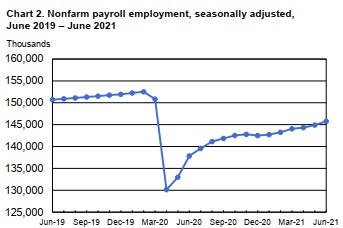Turnover Leads to Opportunities
Looking at an unemployment rate that has been stuck at more than 9 percent for over two years, it would stand to reason that the employment market is static. Little more than 100,000 jobs are being added each month to an economy that employs more than 130 million people.
Yet, the labor market is far from static. Total employment in the United States is turning over at a rate of more than 3 percent per month. That means each month, more than 4 million people start a new job and more than 2 million people voluntarily leave their job. This may seem like taking one step forward while taking one step back, and in terms of lowering overall U.S. unemployment, it is.
At the same time, every month, 4 million hiring managers are looking at their businesses and the economy and deciding they would be better off hiring someone. But when they make that decision, it’s not about just replacing a warm body; it’s an opportunity to change the direction of their workforce.
“A few years back, when someone resigned, HR pulled out the old job description and started to replace them. Now when that same person leaves, a manager’s first thought is more likely to be, ‘How should this role change,’” says Rob Romaine, president of MRINetwork. “At a time when many departments have a difficult time adding positions, reexamining every job description as it opens up can be the lowest friction way to reshape a workforce and with proper planning, large changes can happen relatively quickly.”
In the professional and business services sector the monthly turnover rate is closer to 5 percent, which means that with a clear workforce plan in place, a company’s entire focus can be altered in less than two years.
“Backfill workforce planning requires more foresight than just eliminating one position, while adding another. However, it maintains the continuity of business operations, lowers separation costs, and avoids potential morale or public relations issues,” notes Romaine.
In a backfill workforce plan, the target for where the organization is heading needs to be defined, but the path on how to get there must remain dynamic—changing based both on which positions open up, and what candidates are available. The plan itself should be less about creating a pre-defined organizational chart and more about the capabilities and capacity of the target organization.
“When someone leaves the company, you start by looking at what capabilities that person had which are required immediately,” says Romaine. “Then you can work with a search consultant to understand what talent is currently available to fit your basic requirements and which additional capabilities of the target organization you may be able to include in the role.”
Working with an experienced industry-specific search consultant can bring needed expertise to both formulating and implementing a backfill workforce plan.
“Redefining positions as they open up can lead to only the priorities of the day being addressed,” notes Romaine. “Working with a search consultant to create a workforce plan with a long-term horizon makes larger, more substantive changes possible.”







